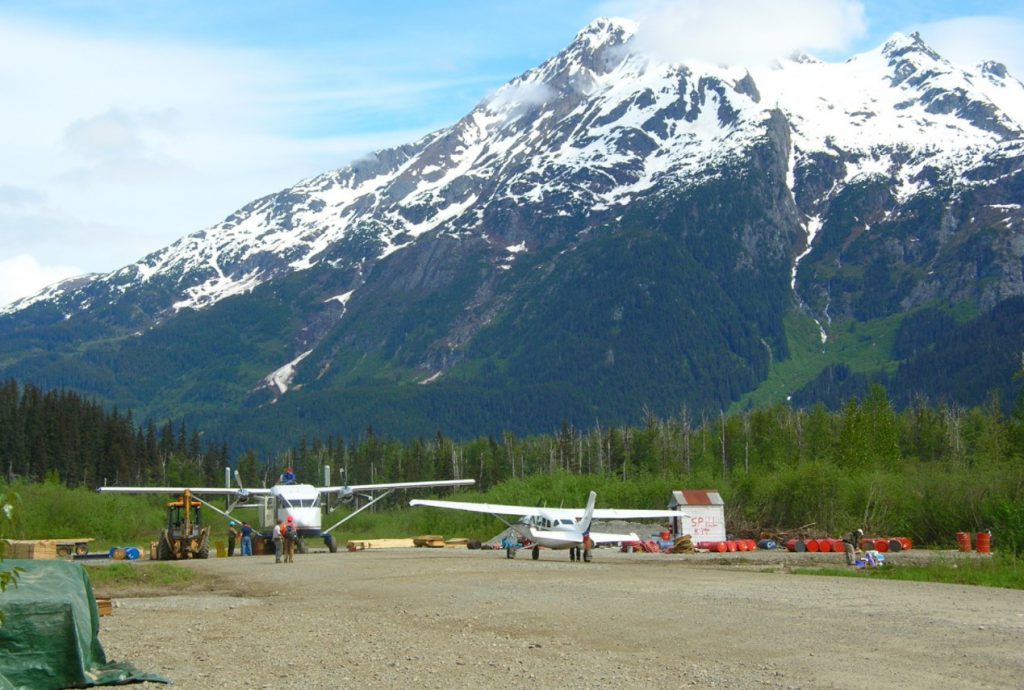Canagold drills 8.4 metres of 17.1 g/t gold at New Polaris, British Columbia

Canagold Resources Ltd. [CCM-TSX; CRCUF-OTCUF] reported high-grade gold assays for four more drill holes from the 24,000-metre, 47-hole drill program at its 100%-owned New Polaris gold project in northwestern British Columbia, located 100 km south of Atlin and 60 km northeast of Juneau, Alaska.
The focus of the drill program is infill and step-out drilling in the C West Main (CWM) vein system which hosts a major part of the gold resources at New Polaris. The intercepts reported below include results for two holes that also intercepted significant mineralization in a parallel vein (C10) located in the hanging-wall of the CWM vein.
Hole 21-1890E1 intersected 17.1 g/t gold over 8.4 metres from 343.0 metres in the C10 Vein and 8.58 g/t gold over 2.1 metres from 442.5 metres in the CWM Vein.
Hole 21-1890E2 intersected 7.25 g/t gold over 4.3 metres from 368.0 metres in the C10 Vein and 25.7 g/t gold over 2.1 metres from 481.7 metres in the CWM Vein.
Hole 21-1859E1 intersected 4.84 g/t gold over 2.2 metres from 393.3 metres in the CWM Vein. Hole 21-1800E1 intersected 8.60 g/t gold over 2.5 metres from 534.6 metres in the CWM Vein.
Scott Eldridge, CEO and director, said, “Intercepting high-grade gold over robust widths in the C10 vein parallel to the CWM vein was an unexpected bonus. The C10 vein has returned high-grade gold results in the past, but we have not previously estimated any resources for it. With these new drill results and further drilling, there is an opportunity for the C10 vein to add additional resources at New Polaris.
“Additionally, we continue to intercept high-grade gold results in every infill drill hole intersecting the CWM vein. These drill results fall within the PEA mine plan and increase the density of drilling in the deposit so that we can upgrade inferred resources to indicated resources.”
The infill drill holes continue to intercept good gold grades over mineable widths throughout the CWM vein system and they support the current resource at depth as predicted by the geological model. An additional vein, the C10 vein, has been intersected in the CWM hanging-wall about 90 to 100 metres above the CWM vein and returned high-grade gold over mineable widths in two of the holes (21-1890E1 and 21-1890E2). Three holes from previous drill campaigns by Canagold had also intersected this zone of mineralization, for example, 13.7 g/t gold over 3.8 metres from 318.6 metres in hole P95C42.
These previous drill intercepts were not incorporated into the geological model. More holes of the infill drill program are expected to intercept this parallel vein and an updated geological model incorporating all of these intercepts will be made at the end of the drill program.
The program is designed primarily to in-fill drill the Inferred Resources of the CWM vein system within the currently defined resources in the PEA. The improved drill density will be used to upgrade parts of the Inferred Resources to Indicated Resources for inclusion in a future feasibility study.
Two deeper exploration holes of approximately 1,000 metres are being drilled to test between 200 to 250 metres down plunge of the modeled extent to the gold mineralization. These will be the deepest holes drilled on the project to date and the results will serve to guide the design of future drill programs.
The 850-hectares New Polaris property lies within the Taku River Tlingit First Nations traditional territory. The New Polaris gold deposit historically produced approximately 245,000 oz gold from 740,000 tonnes of ore averaging 10.3 g/t gold.
